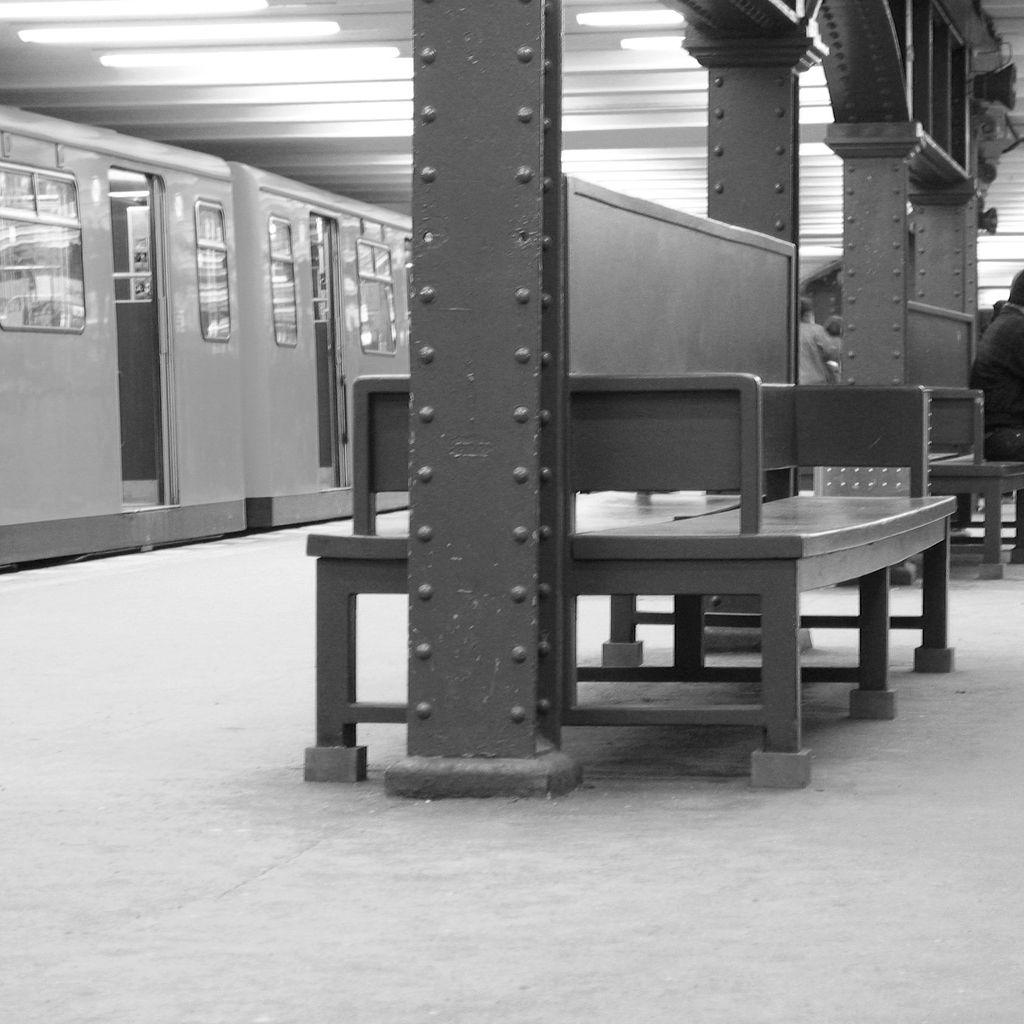U2 Alexanderplatz
Wettbewerb der NGBK Berlin

Auf dem Bahnsteig stehen sechs Bänke. (graue Felder). Aus gefahrenschutztechnischen Gründen darf die Position der Vierergruppe in der Mitte nicht verändert werden. Somit verbleiben zwei Bänke, die versetzt werden können.
Über den Zeitraum eines Jahres sollen jeweils zu Beginn eines Monats die beiden Bänke ihren Standort wechseln. Dieser Turnus erzeugt eine periodisch auftretende Irritation. Die Untersuchung des Bahnsteigs ergab siebzehn mögliche Stellplätze (blaue Felder). Mit zwei Bänken entwickeln sich in zwölf Monaten dadurch genügend Positionen, die ein angedachtes dazuholen weiterer Bänke aus dem Bestand der BVG überflüssig machen.
Um die Irritation der Sitzenden zu verstärken, bocke ich alle Bänke dezent auf. Stulpen um die Füße der Bänke aus 16 mm starkem MDF erhöht die Sitzposition um 32 mm. So gelingt eine Irritation auch bei den vier unverrückbaren Bänken.


From 1985 to 1989, I worked in a factory in the Ruhrgebiet. During this period I would set out every morning at the same time along the same route in the same traffic, at the eternally recurring stoplights and intersections, before taking the analogous route home in the evening.
There is a point at which one falls into the rut of monotonous routine, arriving every day at one’s destination without really remembering what occurred along the way.
To break out of this mindless routine, I began to take different ways home every evening. At the beginning, of course, I would often get lost, but sure enough, I started to experience and appreciate my environment again, as well as myself.
My first ideas for the U2 exhibit focused on how one could transform the room with color, light, and sound, to enliven the space by making it a space of new experiences. It soon became clear to me, however, that this approach really only served the purpose of exhibiting the artist, myself.
Here, in this space, I thought it would be fundamentally more meaningful – and much more exciting – to enable the everyday traveler to approach the daily, quotidian exercise of commuting in a new way. Of course, the last thing I wanted to do was to bother people on what can already be a frustrating daily commute. With this in mind, I decided simply to reconfigure the resting point of the daily commute: I would work with the benches!
Waiting in the subway station means standing around, or just sitting there. An act of routine; banality in the most dramatic meaning of the word! This is exactly what I decided to tackle with my project: I wanted to pull people out of their daily routine. I adjusted the benches by rotating them, turning something people are used to as part of their everyday routine into something unfamiliar. In the static of the unchanging, the calm of sitting and waiting would now contain an unexpected dynamic. The act of sitting down and waiting would become a conscious one. With the adjustment of the benches, new spaces emerged, as well as a new experience. Thereby, for those who are used to sitting down automatically and waiting with the same view in the same space, I was creating a new view of a new space, and a sort of confusion. One was no longer looking at the same wall.
With the newly created perspectives, new interactions between the commuters arose simultaneously. Benches rotated to now be across from one another abruptly force people to sit across from one another. Newly placed and newly rearranged benches give a different view of the people hurrying in and out, on the stairs, or at the ticket counter. In this interruption of routine, every individual is given the chance to see his world in a new way.
